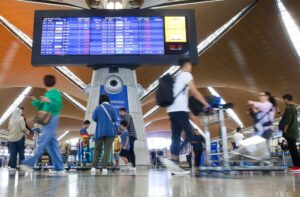JOHOR BARU, Aug 11 — Johor Menteri Besar Datuk Onn Hafiz Ghazi’s proposal for a second Rapid Transit System (RTS) Link between Tuas and Iskandar Puteri has reportedly drawn support from commuters in southwest Johor.
Singapore’s CNA said the plan was welcomed by residents in areas such as Gelang Patah, Pontian and Kulai, who currently rely solely on buses to make the daily cross-border journey via the Tuas Second Link to Singapore.
At Gelang Patah bus terminal last Tuesday, CNA observed more than 100 people in line by 5am, with the first Causeway Link bus quickly filling to capacity and forcing most to wait for the next service.
“During morning rush hour, this is normal,” commuter Kevin Foh was quoted as saying.
“Sometimes we have to wait for two to three buses before we can board, if we are lucky.”
Foh, a Gelang Patah resident in his mid-30s who is employed in Singapore’s retail sector, said the proposed RTS2 would cut his travel time.
“I will just take a taxi from my house to (the proposed RTS station in Iskandar Puteri) instead of this bus station and take the train over to Singapore. It will be much quicker — less waiting time, less queueing hopefully.”
Onn Hafiz announced the proposal on July 31 after meeting Singapore Prime Minister Lawrence Wong, saying it was in line with a decree by Johor Regent Tunku Ismail Sultan Ibrahim.
He did not specify where stations would be located.
The first Johor-Singapore RTS Link, connecting Bukit Chagar in Johor Baru to Woodlands North, is scheduled to open in December 2026, with rail installation works 56 per cent complete as of June.
Bukit Chagar station is about 25km from Gelang Patah — a journey that can take up to two hours by bus during peak periods.
Analysts reportedly told CNA the RTS2 could improve travel for western Johor commuters and boost development in Iskandar Puteri, part of the Johor-Singapore Special Economic Zone.
However, they reportedly said that last-mile connectivity in Tuas and Iskandar Puteri remains limited, and questioned whether passenger volumes would justify construction costs.





